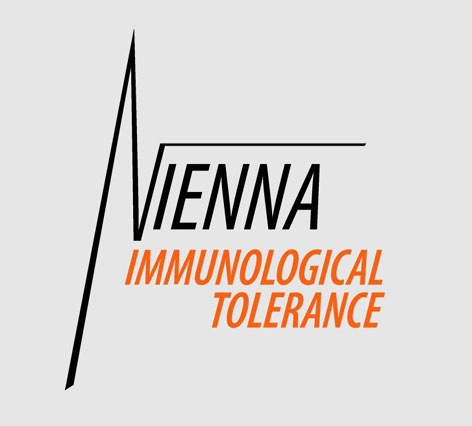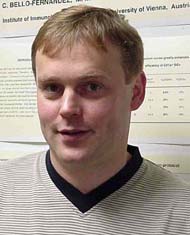
MECHANISMS OF ESTABLISHMENT AND MAINTENANCE OF IMMUNOLOGICAL TOLERANCE
SFB-F23 A SPEZIALFORSCHUNGSBEREICH FUNDED BY THE FWF
 |
MECHANISMS OF ESTABLISHMENT AND MAINTENANCE OF IMMUNOLOGICAL TOLERANCESFB-F23 A SPEZIALFORSCHUNGSBEREICH FUNDED BY THE FWF |
MEMBERS Wilfried Ellmeier |
Johannes Stöckl
Institute of Immunology
OE Clinical Institute of Hygiene and Medical Microbiology
Medical University of Vienna
Borschkegasse 8a
1090 Wien
AUSTRIA
Tel.: +43-1-4277-64951
Fax: +43-1-4277-9649

johannes.stoeckl@meduniwien.ac.at
http://www.immunology.at
----------------------------------------------------------------------------------------------------------
SFB-Project F23-07
Regulatory T-cells induced by human rhinoviruses
SFB co-workers: Eva-Maria Dassler (Technican), Stefanie Kirchberger (PostDoc, start 01/2006)
One of the main functions of the immune system is the control of infection. The contact with a pathogen requires a strong and efficient response of our immune system to prevent harm for the organism. Yet, potent immune responses can be accompanied by severe side-effects with immunopathology as a final result. Thus, anti-pathogen responses need to be controlled adequately. There is increasing evidence that regulatory or suppressor T-cells (Tr-cells) are critically involved in the control of immunity to infection. In turn, recent studies suggest that pathogens actively provoke the generation of Tr-cells thereby "misusing" these cells to evade the immune response.
Human rhinoviruses (HRV), the major cause of common cold in humans, seemingly apply this trick. We have previously found that T-cells stimulated with HRV-treated DC (R-DC) gain potent suppressive function that ismediated via a soluble factor. Our regulatory T-cells do not release increased levels of IL-10 or TGF-beta that are critically involved in the suppressive function of type-1 regulatory T-cells . Moreover, neutralizing antibodies against both factors do not block the inhibitory function of R-DC-induced Tr-cells. Therefore we call them type-2 regulatory T-cells (Tr-2).
The specific aims of our project are I) the molecular and functionally characterization of the inhibitory factor(s) produced by Tr-2 and II) the identification of specific cell surface marker for regulatory T-cells.